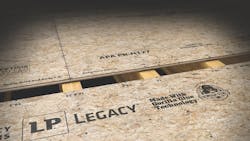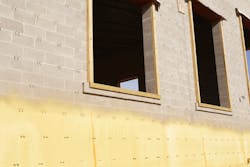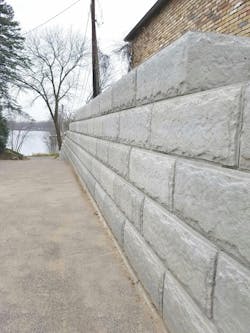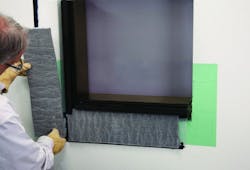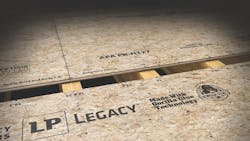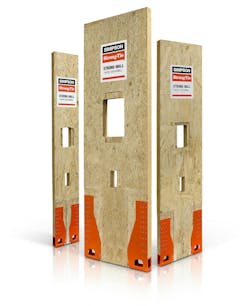1. ICYNENE CLOSED-CELL spray foam insulation | Icynene
The use of spray polyurethane foam (SPF) insulation on the new 140,000-sf Prescott (Wis.) High School was anything but common. In addition to the interior application, the project team specified SPF for the exterior to add energy efficiency. The building’s mass walls were prone to moisture intrusion and air infiltration. The application of closed-cell SPF on the exterior helped Prescott High School achieve an R-value of R-7 per inch while preventing thermal bridging and shifting the dew point in walls to help avoid condensation and moisture concerns.
2. bronco ii wall system | Versa-Lok
The Bronco II system from Versa-Lok can be used to build walls up to 15 feet tall without soil reinforcement. Taller walls can be constructed with the company’s Versa-Grid. The units display six sf of face area and weigh from 1,220 lb (24-inch-deep unit) to 3,215 lb (60-inch-deep unit), or 1,450 lb to 3,820 lb with cores filled. Correct near-vertical positioning is ensured by alignment knobs molded into the top of the units. The knobs allow for tight joints with variable-bond construction. Once installed, the wall face can be altered with stain to blend into its environment.
3. kooltherm k20 concrete sandwich insulation board | Kingspan
This new rigid thermoset insulation is designed for tilt-up and precast concrete wall applications. Kooltherm K20 Concrete Sandwich Board offers a higher R-value per inch than any commonly used insulation, according to the maker. It has an R-value of 17 in a two-inch-think panel. Its core is a rigid thermoset fiber-free phenolic insulant manufactured with a blowing agent that has zero ozone depletion potential and low global warming potential. Kooltherm K20 can be ordered in custom lengths and in R-values from 13.5 to 40.
4. Sheetrock EcoSmart Panels | USG
These gypsum panels feature a new core chemistry and manufacturing process that reduce 20% of carbon dioxide emissions and decrease water usage by 25%. The 5/8-inch-thick panels are offered in two core formulations for fire- and non-fire-rated. They meet the requirements of the Living Building Challenge and the Architecture 2030 Challenge for Products, and may also contribute to additional LEED v4.0 credits.
5. HPI-1000 Building Insulation Blanket | Dow Corning
Editor's Pick
Designed for hard-to-insulate areas, such as where glazing systems meet cavity walls or where parapets meet roofs, this thin, flexible insulation blanket can be easily cut and conformed to complex shapes and tight curvatures. The product is based on silicon aerogel technology which creates a vapor-permeable solid material that is chemically similar to sand or glass, but with low density and thermal conductivity. When applied at a thickness of one inch, it delivers an R-value of 9.6.
6. Thermafiber SAFB | Owens Corning
Formulated for use in applications with stringent requirements around indoor air quality and red-listed products, this insulation is the first formaldehyde-free, light-density mineral wool insulation in North America. Thermafiber SAFB (sound attenuation fire blankets) provides acoustical control, thermal performance, and fire protection in interior walls and floor/ceiling fire-rated assemblies. Thermafiber mineral wool insulation has been installed in eight of the 20 tallest buildings in the world.
7. LP Legacy Sub-Flooring | LP
Editor's Pick
To meet growing demand for stronger sub-flooring materials, LP has partnered with Gorilla Glue to develop LP Legacy, a line of premium sub-flooring that is rated by the APA as one of the stiffest and strongest panels in the industry. Each wood strand is coated with resins using Gorilla Glue technology to ensure maximum moisture resistance. The panel’s high density commends it for hardwood floors and tile applications. Its moisture resistance prevents edge swell. The RainChannel notches on the panel ends promote drainage.
8. Strong-Wall Wood Shearwall | Simpson Strong-Tie
Editor's Pick
This redesigned prefabricated wood shearwall provides greater installation flexibility for contractors and new design options for specifiers. It features a holdown with visible front, back, and side access for easy installation of the anchorage attachment in various framing conditions. The front access opening also allows for easy inspection of the connection to the anchor bolt.
